
On D-Day the Allied troops knew exactly where the German defenses were, which divisions were deployed, what size gun battery they were to affront on the coastline and how each regiment was going to defeat them.
But you may ask yourself, how did the Allies know what they were going to fight against on D-Day?
The answer was not on the frontline, but back in England, more precisely at Bletchley Park where Victory in Europe relied on how efficient the code breakers were on breaking the Third Reich ciphering machines, Enigma and Lorenz
In 1944 the Third Reich dominated and ruled Europe except for England! Spain, Portugal and Switzerland stayed neutral.
Hitler’s propaganda named Festung Europa the countries invaded by the Third Reich, presumably impregnable thanks to the Atlantic Wall. But in reality, Fortress Europe was becoming besieged by the Allies, with the Russians in the East and the Western Allies in Italy.
The Atlantic Wall reinforced with the West Wall (Siegfried Line) was to keep out the Western Allies troops (Americans, British, Canadians…) out while enabling the Third Reich to focus on the Eastern front and the Russians.
Normandy of course was no exception, and the Atlantic Wall was well present all along the coastline.
For the Allies, on D-Day, knowing in advance the details of the line of defenses, troops they would have to fight against, would make the difference between success and disaster.
Knowledge was power!
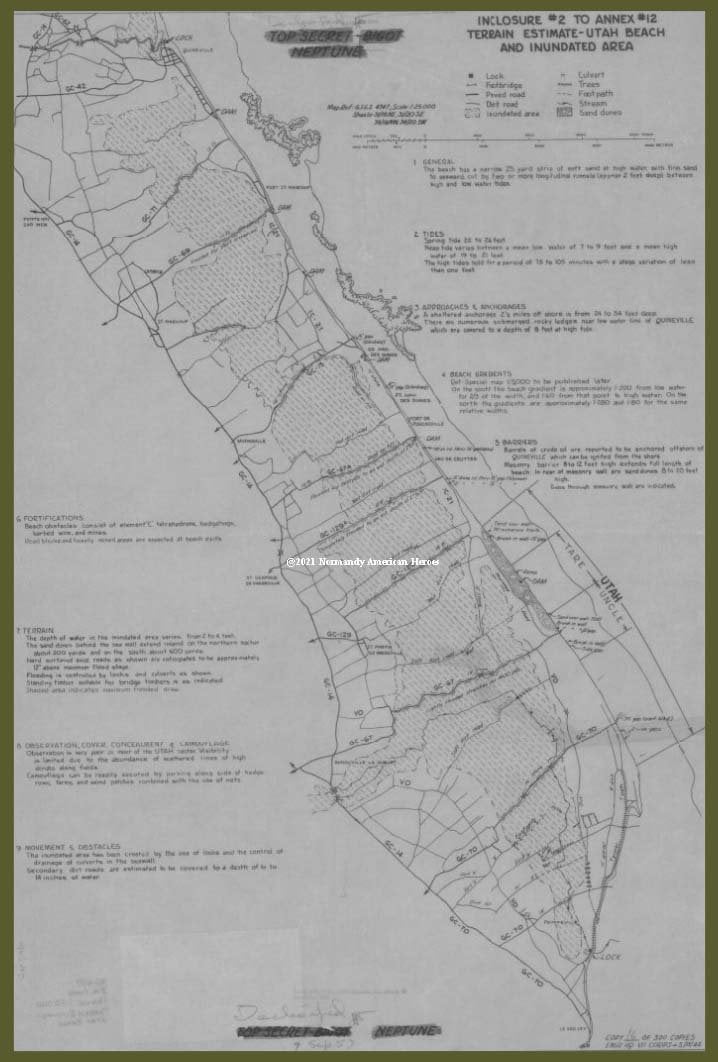
The Nazis knew that! This is why all messages sent to the Luftwaffe (Air Force), Wehrmacht (Army), Kriegsmarine (Navy) etc. were encrypted to keep its contents from falling into enemy hands.
To say the least, at the beginning of WWII, the Third Reich communication encrypted system looked bulletproof, this is why the Bletchley Park Code Breakers was created to try to break it as of 1938.
By 1944, Bletchley Park had grown to be the first intelligence factory with approximately 8,000 people working there 24 hours a day by shift of 8 hours. About 2/3rd of them were women.
Of course, not all the Nazis coded message were broken but a vast majority were, enabling the allies to fill out the enormous Third Reich jigsaw puzzle of Festung Europa!
- Break the SS encryption and you could read their signals
- Match that with radio directional finding of their signals and you could pinpoint their headquarters
- Break a message that shows the Fallschirmjäger transferred from Italy to Brittany (France) and you could reasonably believe that a new airborne unit was being formed on the western coast of France
- Break a message that asked for the approval of Generalfeldmarschall Karl von Rundstedt of a division being transferred from the Russian front to Normandy, France and you knew that that specific division was now under his command!
Now, imagine the above decrypted a thousand times by the code breakers at Bletchley Park, the encrypted messages throughout Europe all being broken, translated, analyzed and deployed appropriately to the High Ranks Commanders by Hut 3 team.
As of 1943, Captain Eric Malcolm Jones was the head of Hut 3, responsible for intelligence on the Wehrmacht and Luftwaffe. Him and his team turned those deciphered messages into great strategic military intelligence, codenamed ULTRA.
The Allies had an almost detailed picture of Festung Europa puzzle of the Third Reich, along with orders of battle, and this 1 ½ year before D-Day!
Sometimes the enemy helped Bletchley Park Code Breakers! How so? Hitler who had a strong ego wanted to show off to his eastern ally, Japan, how formidable and impregnable was the Atlantic Wall.
He thus invited Japanese Ambassador, General Hiroshi Ōshima who unwittingly became a major source of communications intelligence for the Allies! General George C. Marshall quoted that General Ōshima was "our main basis of information regarding Hitler's intentions in Europe".
General Ōshima with Hitler went on a guided tour of the Atlantic Wall! Then in November 1943, General Ōshima sent a report to Japan with full details of what he had seen while visiting the Atlantic Wall.
With the help of the United States, Bletchley Park were able to read the whole report!
By 1944, the Allies knew the exact location of 56 of the 58 Wehrmacht Divisions in Normandy almost as well as the Germans themselves!
The greatest prize ever at Bletchley Park was breaking the communication network of the Nazis High Command.
All Senior Officers like Generalfeldmarschall Karl von Rundstedt, Generalfeldmarschall Walter Model, Generalfeldmarschall Erwin Rommel to name a few communicated with the government in Berlin using the Lorenz SZ40 cipher machines.
A direct priceless opening into the minds of the leaders of the Third Reich!
British cryptanalysts, who referred to encrypted German teleprinter traffic as Fish, with their typical sense of humor, dubbed the Lorenz SZ40 and its traffic Tunny, meaning tuna fish.
They were able to deduce its logical structure three years before they saw such a machine much more complex than Enigma.
Enigma was good enough to cipher communications between the Kriegsmarine, the Luftwaffe and the Wehrmacht but the Lorenz cipher machine was to hide the secrets of the Third Reich.
Breaking into these high-level networks tied up a lot of code breakers at Bletchley Park who worked painstakingly by hand to try to break the messages, but unforeseen help was soon to be on its way.
That help came from those masters of electronic communication, the general Post Office whose engineers turned William Thomas Tutte ideas on automated statistical analysis into a working machine, dubbed the Heath Robinson.
But the much faster, sophisticated and reliable Colossus “computer”, developed by Tommy Flowers and using algorithms written by William Tutte and his colleagues, soon took over Heath Robinson for breaking the Lorenz codes.
Colossus was the first large scale electronic digital computer designed to automate code breaking, but not totally! It was delivered at Bletchley Park in December 1943 after almost one year of research and hard work.
Its arrival marked the start of the computer era!
How so? Colossus was able to perform millions of logical operations electronically to reveal the settings used to encipher an intercepted message, it was an incredible achievement after nearly three years of hard working and invention.
Quite an achievement knowing that Enigma had three settings whilst Lorenz ten!
Now the Allies could not only read more and more messages, messages that had been unbreakable but had also access to some of the crucial intelligence of the entire war including direct communication among others between Hitler and his commander in the West, Generalfeldmarschall Karl von Rundstedt.
Bletchley Park Code Breakers uncovered the major scale of Hitler’s megalomania, his distrust of his entourage and were able to feed deception information that the Nazis wanted to hear about the upcoming landing invasion of the Allied forces in the Pas de Calais, code name Operation Fortitude.
Operation Fortitude was to convince the Nazis Intelligence, the Abwehr, that the Third Reich had to reinforce their Pas de Calais defenses while reducing the number of troops in Normandy as the landing would take place there.
Of course, Operation Fortitude success was also thanks to the priceless help of Agent Garbo, the Allied propaganda of General Patton “phantom” army FUSAC, the fake radio traffic detected on purpose by the enemy eavesdroppers, the fake reports of enemy spies in the U.K. (note: by 1942 not one spy working for the enemy had not been captured, turned into a double agent or executed), and all in all the Nazis fell into the trap, headfirst!
Hitler was convinced, with all the deception information, that the D-Day landing would take place in Calais, and this weeks after the actual landing in Normandy!
Thanks to the Code Breakers in Bletchley Park, analyzing the cipher messages (Enigma / Lorenz) of the Third Reich, they knew exactly where the deception information was working and where it needed to be reinforced to be convincing.
Ten days before the planned invasion in Normandy, General Ōshima contacted Adolf Hitler who wrote back to him that he was sure that the landing would be taking place in Calais.
With precious insights like these, needless to say that the Allied Commanders were more confident with their plans to invade Normandy.
So, what could this mean to the thousands of troops who were taking part in the biggest amphibious landing ever to take place in history? Simply, it meant they knew what they were facing, and their chance of success.
Bletchley Park deciphered messages meant that Allies Commanders could predict how the enemy was going to react and therefore be able to anticipate and counter them.
Here's how! About 10 days before D-Day, First U.S. Army General Bradley ordered the 82nd Airborne Division to move further East from their initial landing point after the Code Breakers of Bletchley Park revealed that German troops were moving in from the West of the Cotentin Peninsula to the original drop zones of the paratroopers!
Once the invasion began, the speed of deciphering messages became just outstanding!
Messages were being intercepted, deciphered, translated and ready to be sent on to an Ally Commander in less than 3 hours from interception!
Bletchley Park were reading enemy reports of the landing crafts, vessels, paratroopers, infantry etc. almost as fast as the enemy themselves!
Special Leading Units (SLU) would soon land after D-Day to follow each Army Headquarters and communicate with Bletchley Park Senior Headquarters.
After the failed German counterattack of Mortain, Operation Lüttich, General Patton learned that the counterattack had been deciphered by the code breakers of Bletchley Park but that the 30th Infantry Division knew nothing of the upcoming danger.
Furious he ordered that from that day on, deciphered messages in the interest of the Third U.S. Army be on his desk every morning…and this till the end of the war.
Between 1942 and V-E day on May 7th, 1945, Bletchley Park had decoded around 5 Million messages from Enigma as well as other minor cypher messages of the Third Reich.
General Eisenhower stated after the war: "the code breakers of Bletchley Park saved thousands of lives on D-Day and the final victory of the Allies”.
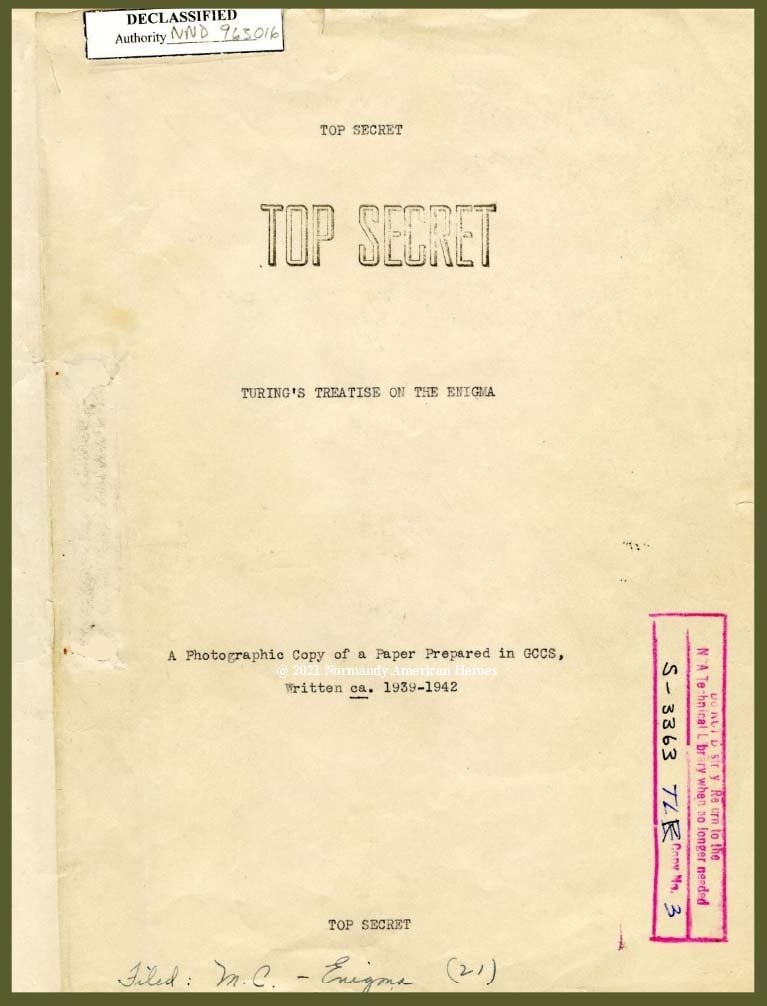
STATION X
In 1938, Admiral Hugh Sinclair was certain that war with the Third Reich would come and started looking for somewhere outside London to set up a code breaking and intelligence operations.
He therefore bought Bletchley Park to become his secret base, soon known as Station X paying with his own finance as the government couldn’t afford it!
Members of MI6 and code breakers were transferred to Bletchley Park, the cover up for the locals who may have asked too many questions was that they were part of Captain Ridley’s Shooting Party! Not surprisingly, Captain Ridley was actually a member of MI6!
During the first few months of the war there was a radio communications room at Bletchley Park run by the MI6 and connected to British Embassies in Europe.
It was called by MI6, Station X as it was the 10th radio communication setup by the Intelligence for its operations and as you have guessed, X in Roman numeral means 10.
Alfred Dillwyn "Dilly" Knox started prospecting at Cambridge and Oxford to find mathematicians who could work with him at Bletchley Park.
He convinced William Gordon Welchman (British-American mathematician), Alan Mathison Turing (English mathematician, computer scientist, logician, cryptanalyst, philosopher, and theoretical biologist), Peter Frank George Twinn (British mathematician) to work with him and they all settled at the cottages behind the mansion of Bletchley Park.
"Dilly" Knox, Chief Cryptographer, with his team, then moved to Bletchley Park and settled in the cottages behind the mansion not far from the iron gates.
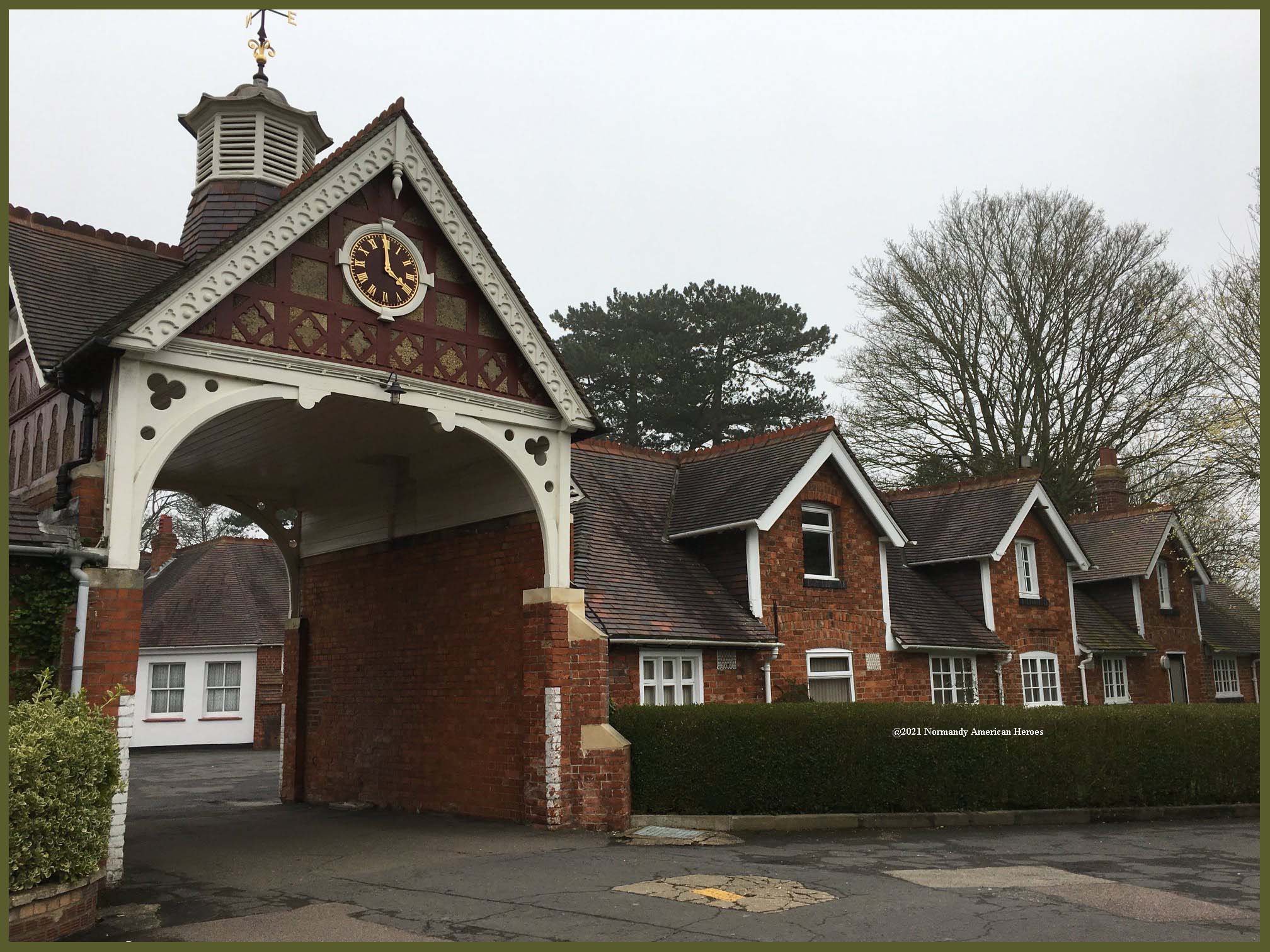
The iron gates at the back of the mansion guarded the entrance to the incoming motorcycle messengers bringing intercepted enemy messages from Y Stations - signals intelligence sites (interception of signals and identifying where they were coming from) throughout England and access to the code breakers working there.
In 1938 food for the small team was provided in the Bletchley Park Mansion and cooked by a chef from the Savoy Hotel in London! Needless to say, that the cuisine was excellent.
As numbers of employees increased in time, the dining room of the Mansion was supplemented by Hut 2
Hut 2 was very popular to the people working at Bletchley Park as it served food (typical famed British sandwiches, fish & chips etc.…), beer and afternoon tea! It even had a small library. Keeping the workers happy and healthy was of course a daily concern at Bletchley Park.
Evidently everyone at Bletchley Park had to be housed and fed but most importantly they had to relax. A tennis court next to the mansion was a favorite sport practiced. Walking around the lake, was a favorite and a good means to seduce the opposite sex.
Let’s not forget that the vast majority of the people working there were very young, often in their teens and were engaged in stressful, grueling day to day work demanding great concentration that to say the least, today most youngsters have a hard time with! A young creative, crazy, original community!
Therefore, it was important for them to let off steam! Some as in today’s world had a burn out and had time off to try to get over it. Sometimes it worked sometimes it didn’t and they were sent off to do another job for the war effort less stressful.
Interestingly but not surprising, quite a few romances started off during the breaks, even marriages.
As the logistics of Bletchley Park grew, so did the number of people needed to run it and by February 1945 they were close to 9000 people working on the site, about 6000 were women.
The staff of course had to be housed outside of Bletchley Park which had only a few cottages. The people would come in by foot, cycling or driven pending in which nearby village they stayed.
Like in a factory today, Bletchley Park was run on a 24-hour shift, 3 x 8 hours meaning there was continuous ingoing and outgoing of employees there. Just imagine how difficult it was to stay discreet.
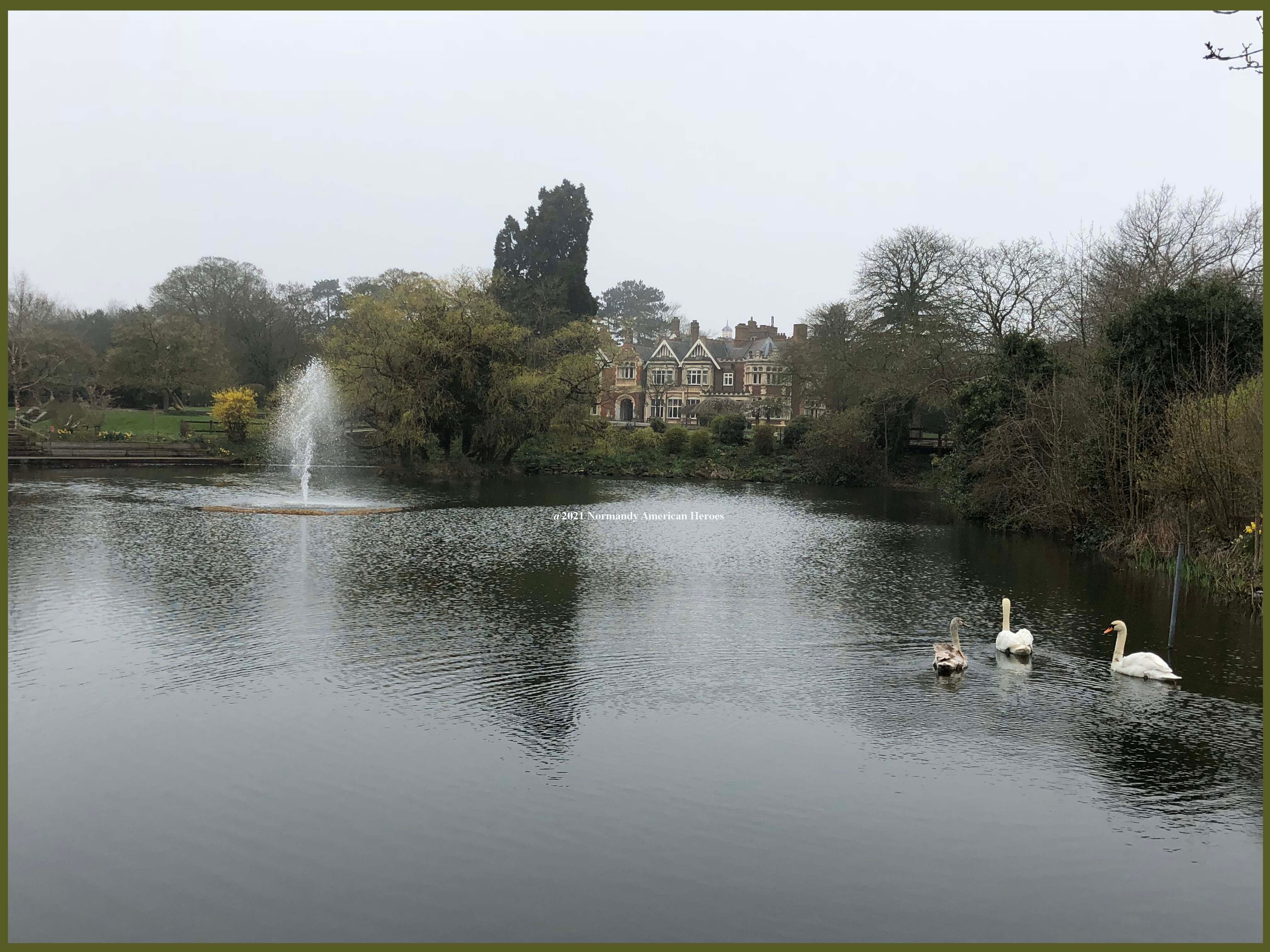
Back in 1939 and later in the summer, Alfred Knox and Commander Alexander "Alastair" Guthrie Denniston had met twice with a team of Polish cryptographers eager to share their discoveries of Enigma before Poland fell under the Third Reich, France not been interested!
Marian Rejewski was a Polish cryptographer and mathematician who had solved the plugboard-equipped Enigma used by Nazi Germany, and the settings used by an operator on a particular network. They were the first to realize the importance of mathematicians who they believed were the best to be able to solve and break the Enigma encoding machine.
Most importantly, during the second Polish/French/British conference, held on July 25–26 1939 at the Polish Cipher Bureau facility, Pyry, south of Warsaw, Poland, they proved that it could be done!
Code breaking was started on the ground floor of the mansion of Bletchley Park.
“Alastair" Denniston was in charge of the top-secret operations at Bletchley Park in 1939. Other colleagues joined him like "Dilly" Knox and "Frank" Birch and of course different people recruited for war time work.
When England and France declared war on the Third Reich on September 3rd, 1939, approximately 200 people were working full time at Bletchley Park.
At the beginning, the success of the code breakers at Bletchley Park was mainly due to the fact that there were no hierarchy rules as such! The top brains were brought in and encouraged to do whatever they fought was needed to solve the problems of Enigma.
They worked day and night, and during their break some would cycle around the compound wearing gas masks to keep hay fever away. To say the least it was this unique and highly successful working environment that enabled them to break the codes of Enigma.
Working with some genius mathematicians, grand chess players, musicians, historians, linguist made this melting pot of workers really special! Being a genius didn’t necessary mean that that person was clean on himself, but it was accepted by the others, especially the ladies, as they realized that their minds were on other things.
When the war started it was realized very quickly that a bigger team had to be recruited at Bletchley Park. Not only mathematicians, but linguists like Alfred Knox to unlock forgotten languages, historians, experts in solving the daily telegraph cryptic crossword and at least three grand chess masters and others who had a musical background.
There was a strong belief that because Enigma secrets had yet to be unlocked, a variety of skills would more than likely be needed. A collective mix of puzzle solvers were brought to Bletchley Park, women and men coming from different environment with agile minds who could approach problems from unusual angles!
At Bletchley Park the messages were deciphered and translated. When the war started an average of 3000 incoming messages were brought at Bletchley Park but by 1944, an average of 20,000 messages were brought each day!
The Third Reich evidently relied on their unbreakable Enigma machine used in their war effort. Hitler was convinced Enigma was impenetrable so for the Allies it was vital to succeed if they were to defeat the Third Reich.
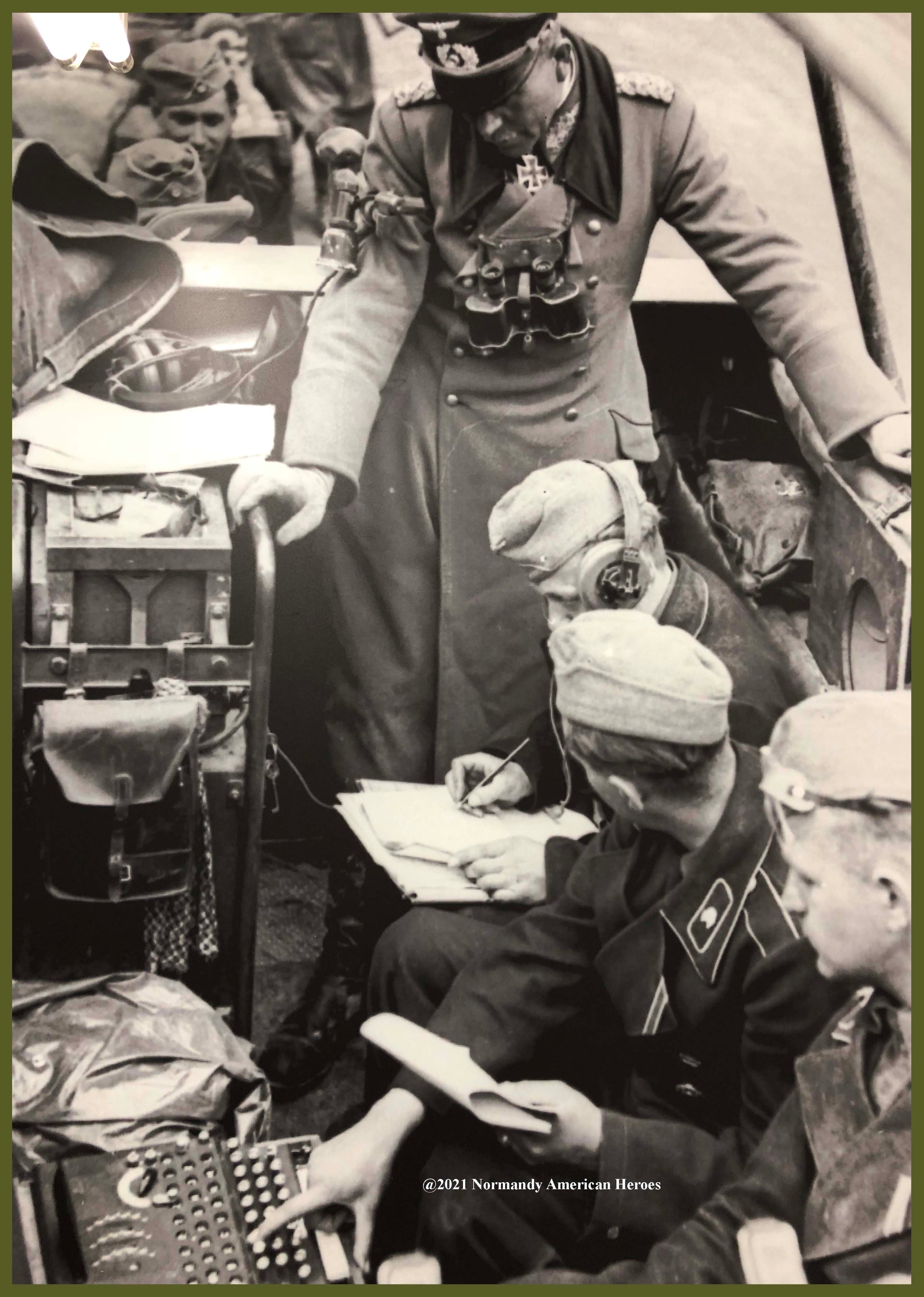
Let's not forget that Enigma had been available since 1923. When the Kriegsmarine started using it in 1926 it was simply taken off the market and the Germans started modifying the machine to make it even more secure than it already was. Shortly after the Wehrmacht and Luftwaffe adopted this ciphering system.
Easy to carry, Enigma was used to encrypt and decipher messages. How did it work? An operative would encrypt the message, sent in morse code by radio to a recipient who by typing the encrypted message into his own Enigma machine would decipher it.
To make sure the message could not be broken easily by the enemy, Enigma had a number of settings which the operator adjusted each day.
For the system to work, the sender and recipient of the message needed to have their Enigma machine setup exactly with the same settings.
By January 1940, the radio communication room was closed down as it was becoming difficult to stay discreet with those big antennas at the top of the brick tower of Bletchley Park.
The first wartime breaking of the Enigma code was made in January 1940, at the same period of time when MI6 moved out. Using the Polish information, Peter Twinn was the first cryptographer to read the Third Reich Enigma messages.
Then another breakthrough came thanks to John Herivel’s tip that he formulated which relied on understanding human nature and not just mathematics.
John Herivel would later state: “suddenly one night, something very strange happened. I may have dozed off by the fire, a dangerous thing to do as I often smoke a pipe and might have burn a hole in the carpet or worse. I must have woken up with a start and a faint trace of a vanishing dream in my head, whatever it was I was left with a distinct picture, imagined of course, in my mind’s eyes of the German Enigma Operator early in the morning where he would have to wake up or be wakened and set up the new Enigma key of the day on his machine.”
John Herivel had realized that if operators acted like this, it was likely that the three letters would only vary by a few positions, if at all!
Alfred Knox and his team were remarkable because they worked theoretically reducing code breaking into process like filling in a crossword!
Alfred Knox was also one of the first to realize with John Herivel that Enigma weakness was the people who operated it and the mistakes they could make like all human beings. It was one of the greatest feats of the code breakers, using psychology.
Early in the war, the code breakers had also learned that breaking the Enigma encrypted messages was one thing but convincing the military commanders of the value of the deciphered message was another!
I.e., in 1940 the code breakers uncovered evidence that there was an important meeting between the Third Reich High Command and the staff in France giving the RAF 8 hours’ notice of the event. Regretfully, the information was ignored missing the opportunity to kill key high rank officers of the Third Reich!
The contents of the deciphered messages of Bletchley Park were on purpose disguised to make them appear to be messages coming from agents in the field and thus had no more credibility than any other intelligence messages. The existence of Bletchley Park and of Enigma encrypted messages been broken and read was known to only but a few.
So, in June 1940, the British Government decided to setup a system that would guarantee that Bletchley Park messages were sent to people who clearly understood what it meant.
Code name ULTRA, all messages from Bletchley Park were stamped MOST SECRET – ULTRA on the top and bottom of the page.
The secret service MI6 setup a special liaison unit and they associated special communication units who were sole responsible of delivering the ULTRA deciphered messages directly into the hands of commanders on the battlefields.
Of course, strict rules had to be followed. As soon as they were read and understood, ULTRA messages had to be destroyed!
No ULTRA recipient was to transmit or repeat an ULTRA signal. Actions taken by an Officer must not lead, under any circumstances, the enemy to believe his Enigma signal had been read and deciphered. The recipient had to voluntarily put himself in a position that he could be captured by the enemy.
When the town of Coventry was bombed in the night of November 14th, 1940, the Luftwaffe bombing raid was so devastating that at least 600 civilians were killed and 2/3rd of the town was damaged or destroyed.
One of the belief of Bletchley Park was that the code breakers knew of the incoming attack on Coventry and that Prime Minister Winston Churchill disregarded the warning so as to protect the breaking of Enigma?
This is completely untrue according to the code breakers who were there at that time and testified later in time. They had decrypted an important operation code-named: “Operation Mondscheinsonate” but the code breakers knew nothing more than the name of the operation and to their dismay were not able to break any key messages for several days before the fateful day of November 14th, 1940.
The result was the tragedy of Coventry. The missing keys were later on broken, and the code breakers were never able to explain their earlier failure.
In 1942 the industrialization of code breaking at Bletchley Park required more space for all the employees with buildings built rapidly. It had been decided back in May 1941 that future accommodations would replace the wooden huts by more permanent bricks and steel buildings. Block A was the first to be built as such.
The code breakers finally left the huts to more substantial buildings where some comfort and heat were at the rendez vous!
So, the team working in Hut 4 moved to Block A while the teams of Hut 3, 6 and 8 moved to Block D but unsurprisingly continued to call themselves Hut 3, 6 and 8 while their old wooden huts were renumbered 16, 18 and 23.
Although not fully aware of the part they played in the Enigma global picture, sometimes events happened which demonstrated to the different teams how their work together could change the course of the war.

















